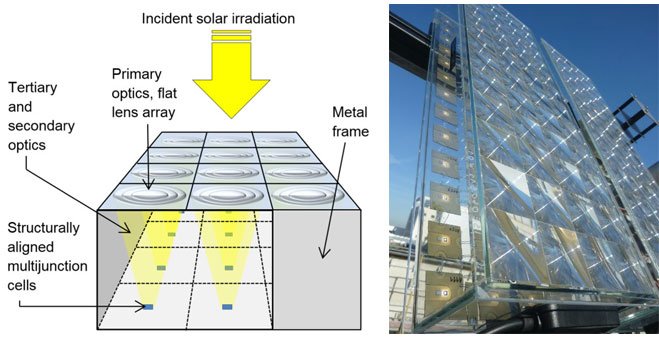Temperature is one of the important factors that affect the concentrator photovoltaics conversion efficiency of solar cells. When designing concentrating solar photovoltaic power generation system, the temperature control of solar modules must be considered. This paper introduces the research results of microchannel cooling technology of concentrating solar cells at home and abroad, analyzes the current common cooling methods, and introduces several promising new microchannel cooling technologies.
Generally, the concentrator photovoltaics efficiency of commercial solar cells is 6% ~ 15%. In the process of operation, most of the unused solar radiation energy is absorbed and converted into heat energy by solar cells except part of it is reflected; If the absorbed heat can not be removed in time, the temperature of the solar cell will gradually increase, the power generation efficiency will decrease (according to statistics, the output power will increase by 0.2% - 0.5% when the temperature of the cell module decreases 1), and the service life of the solar cell will be shortened due to the rapid aging when it works at high temperature for a long time.

Concentrator photovoltaics power generation technology uses low-cost mirrors or lenses, which can reduce the use of some expensive solar cells. When solar cells work under low or even high light intensity, the effective output power per unit area increases significantly, and the power generation cost decreases significantly. However, with the increase of radiation intensity per unit area of the panel, the heat absorbed also increases, The temperature control and heat dissipation of the cell are more prominent.
The microchannel cooling of solar cells is an important aspect to be considered in designing a concentrator photovoltaics power generation system. The designed cooling system should effectively reduce the temperature of the cell and maintain the uniformity of the surface temperature of the cell. Based on the introduction of common air and water cooling methods, this paper analyzes the application prospect of several new microchannel cooling technologies in cell cooling, such as heat pipe technology, microchannel liquid jet impingement and so on.